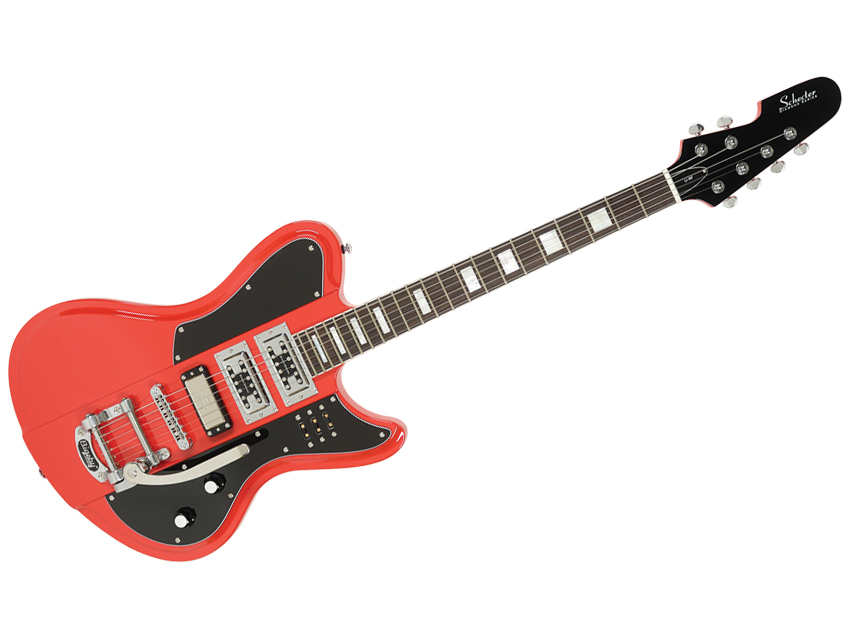MusicRadar Verdict
The Robin Finck Ultra offers plenty of appeal in its build quality, comfortable playability and range of sounds.
Pros
- +
Smooth vibrato. Wide variety of pickup switching options.
Cons
- -
Initally annoying machinehead arrangement.
MusicRadar's got your back
Let's dream for a minute. You're the long-term guitarist in Nine Inch Nails and also the man who was once tasked with replacing Slash in Guns N' Roses. Your signature guitar, then, is going to be a weapon.
Perhaps a scythe body shape? Active pickups to slice through a wall of pounding electronics? Possibly a Floyd to ensure you return to pitch after those erratic scoops?
"The glassy feel makes string bends a dream."
Well, Robin Finck is that guitarist, but his surprisingly retro-looking Schecter shows these stereotypes the door. The outline comes from the Schecter Ultra.
Unlike the standard Ultra models, Finck has gone with a reverse-style headstock with a 2/4 machinehead arrangement.
Pickup-wise, there's a pair of Duncan Designed FG101 mini- humbuckers in the neck and middle pickup positions and a Seymour Duncan SM-3B in the bridge. Finck has also opted for a genuine Bigsby B-50 vibrato.
The body is big and the large headstock takes this guitar almost to Firebird-sized proportions. While the arrangement of the machineheads could be the source of some annoyance, it's strangely intuitive and pretty soon you'll forget that it's any different.
The rosewood fingerboard has 22 extra jumbo frets, which are finished impeccably, and the glassy feel makes string bends and wide vibrato a dream. Our model came set up with a comfortable string height - not the lowest, but definitely not the highest action we've played.
Finck's guitar has a three-position toggle for each pickup and all can be set to either 'full', 'split' or 'off'. Played clean, the neck presents you with an authentic surfy twang.
The middle pickup is less round and you get greater attack with more thump from the mids. It sounds great for a straight-up rock rhythm tone under distortion, too.
The bridge SM3 gives the most output and bite, and if you've doubted mini-humbuckers' hard-rock credentials, this might make you re-evaluate.
The most fun comes when you mix the combinations - all pickups on, middle and neck together, neck in full humbucking mode with the bridge split, for example.
There's something here for everyone (bar extreme metal) and it's hard not to be impressed. However, the size could be a problem if you struggle with big guitars and switching between radically different sounds isn't going to happen quickly.

I'm a freelance member of the MusicRadar team, specialising in drum news, interviews and reviews. I formerly edited Rhythm and Total Guitar here in the UK and have been playing drums for more than 25 years (my arms are very tired). When I'm not working on the site, I can be found on my electronic kit at home, or gigging and depping in function bands and the odd original project.
“Thank God I was French and my voice was terrible, so I couldn’t write songs - otherwise I would be like any other musician”: Air's Nicolas Godin reflects on the success of Moon Safari
MusicRadar deals of the week: Score £900 off a Gibson Les Paul Standard, £350 off the Adam Jones Epiphone Les Paul Custom and hundreds off Fender, Squier and EVH
“I wanted to design a pedal range that’ll last 10, 20, 30, 40 years... It could be something you could bequeath to those you love”: Exquisite stompboxes, built to last a lifetime, meet Red Witch’s Apothecary Series










